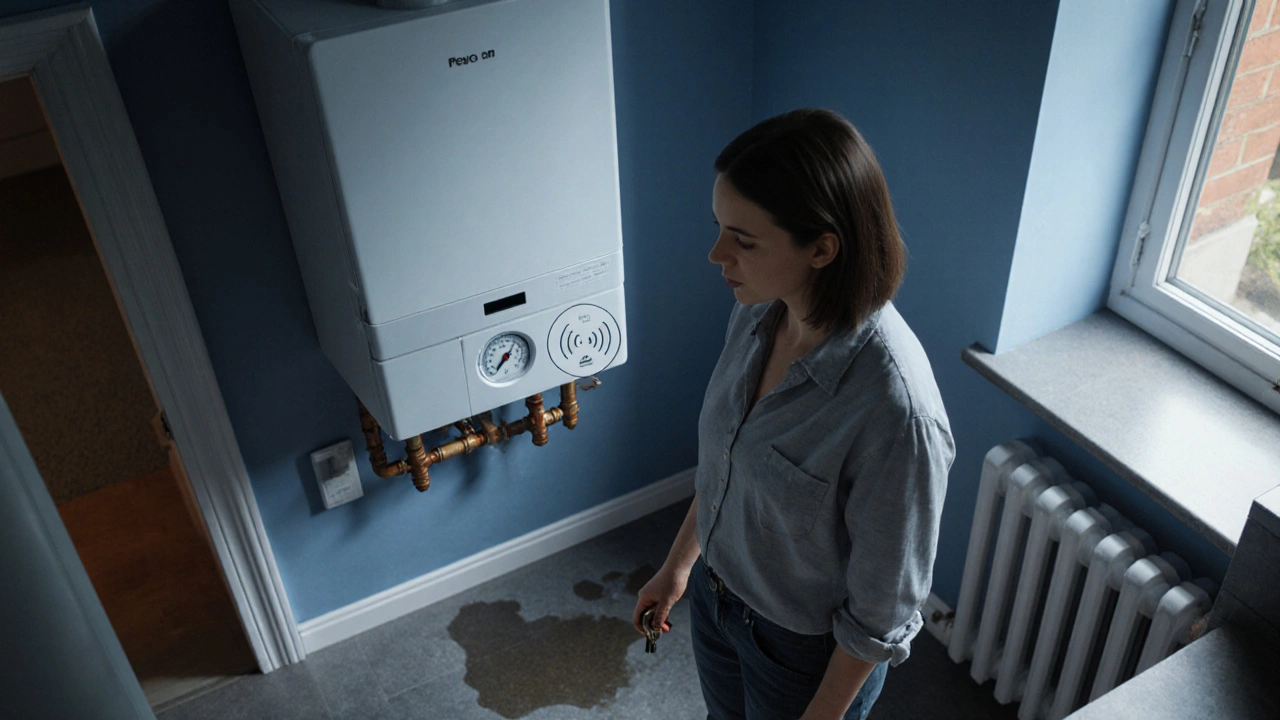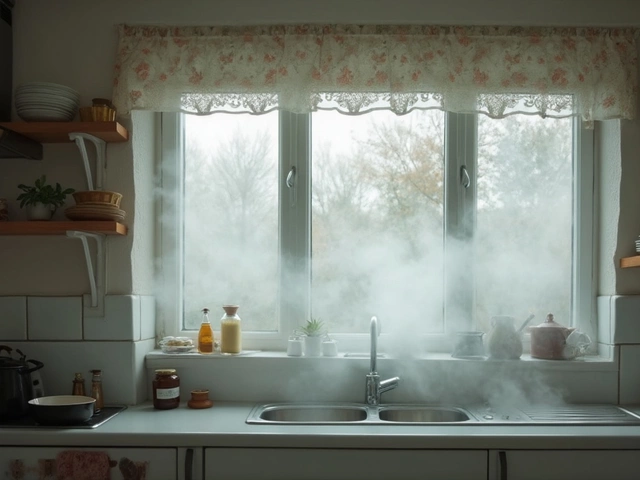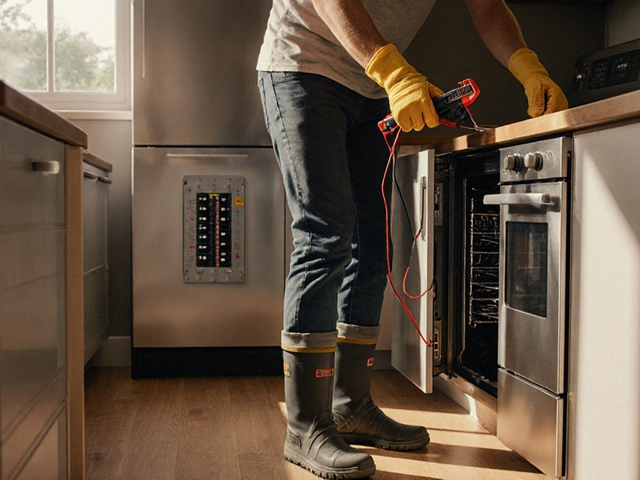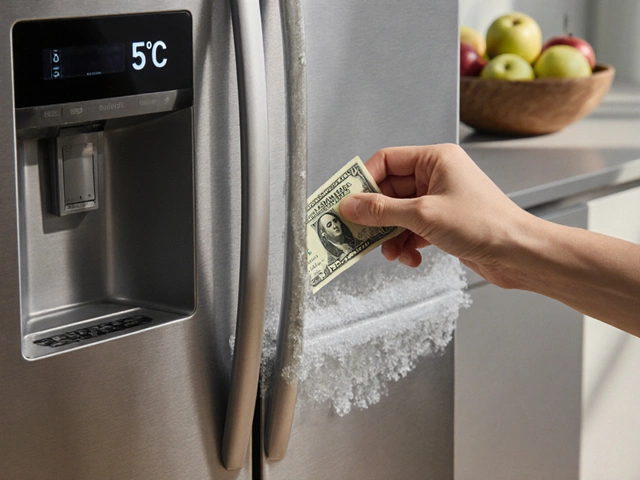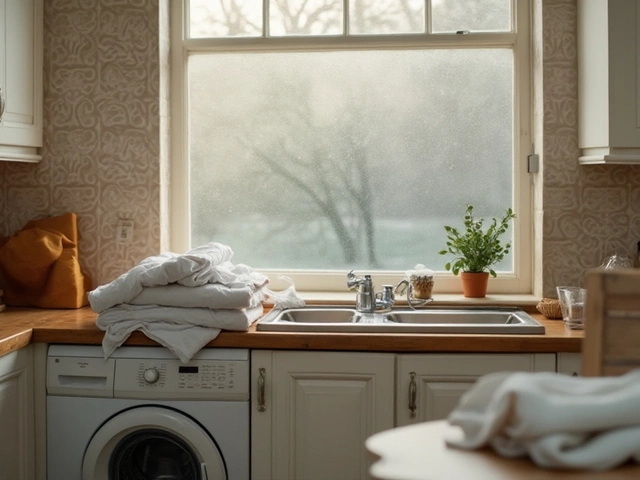Key Takeaways
- Strange noises, loss of pressure, odd smells, and water leaks are immediate red flags.
- Regular visual checks and a yearly service stop most breakdowns before they start.
- If the boiler won’t fire, flashes an error code, or the house stays cold, call a qualified technician right away.
- Minor issues like a dirty thermostat can often be fixed yourself, but safety‑related components should never be DIY.
- Keeping a simple log of symptoms helps the repairperson pinpoint the problem faster and can lower labour costs.
When your home’s Boiler is a sealed system that heats water and circulates it through radiators or under‑floor pipes to keep your house warm, it quietly does most of the work. Most of us only notice it when something goes wrong - a faint clicking, a sudden loss of heat, or a puddle under the unit. The question "When should I worry about my boiler?" isn’t about panic; it’s about spotting the signs that mean a professional should step in before a minor glitch turns into a costly repair or a safety hazard.
1. The most common warning signs
Below are the symptoms you’ll see most often. If you notice any of them, treat them as a call to investigate further.
- Unusual noises - clanking, banging, whistling or gurgling sounds usually indicate air in the system, a loose part, or a failing heat exchanger.
- Drop in pressure - check the Pressure gauge on the front of the boiler. A reading below 1 bar when the system is off, or a steady decline during operation, means the system is losing water.
- Strange smells - a sulphur or rotten‑egg odor often points to a gas leak, while a musty scent can be a sign of mould in the flue.
- Water leaks - any puddle around the boiler, pipework or the baseplate is a red flag. Leaks can come from the expansion vessel, pipe joints, or the heat exchanger itself.
- Cold radiators - if some radiators stay cool while others heat up, you might have trapped air, a blocked valve, or a faulty thermostat.
- Frequent cycling - the boiler turns on and off quickly (short‑cycling). This often means a faulty temperature sensor or an oversized boiler for the space.
- Error codes or flashing lights - modern boilers display diagnostic codes. Look them up in the manual; they usually point directly to the failing component.
2. Components that commonly cause trouble
Understanding the parts helps you decide whether a DIY fix is safe.
| Symptom | Probable component | Recommended action |
|---|---|---|
| Clicking or knocking | Heat exchanger | Schedule a professional inspection - corrosion can lead to leaks. |
| Low pressure | Expansion vessel | Check the valve; if it’s lost charge, it needs re‑pressurising or replacement. |
| Thermostat not responding | Thermostat | Replace batteries or reset; clean contacts if dirty. |
| Gas smell or no flame | Gas valve & Pilot light | Evacuate, ventilate, and call a licensed gas plumber immediately. |
| Display shows error code | Circuit board | Consult manual; if code persists, have the board tested/replaced. |
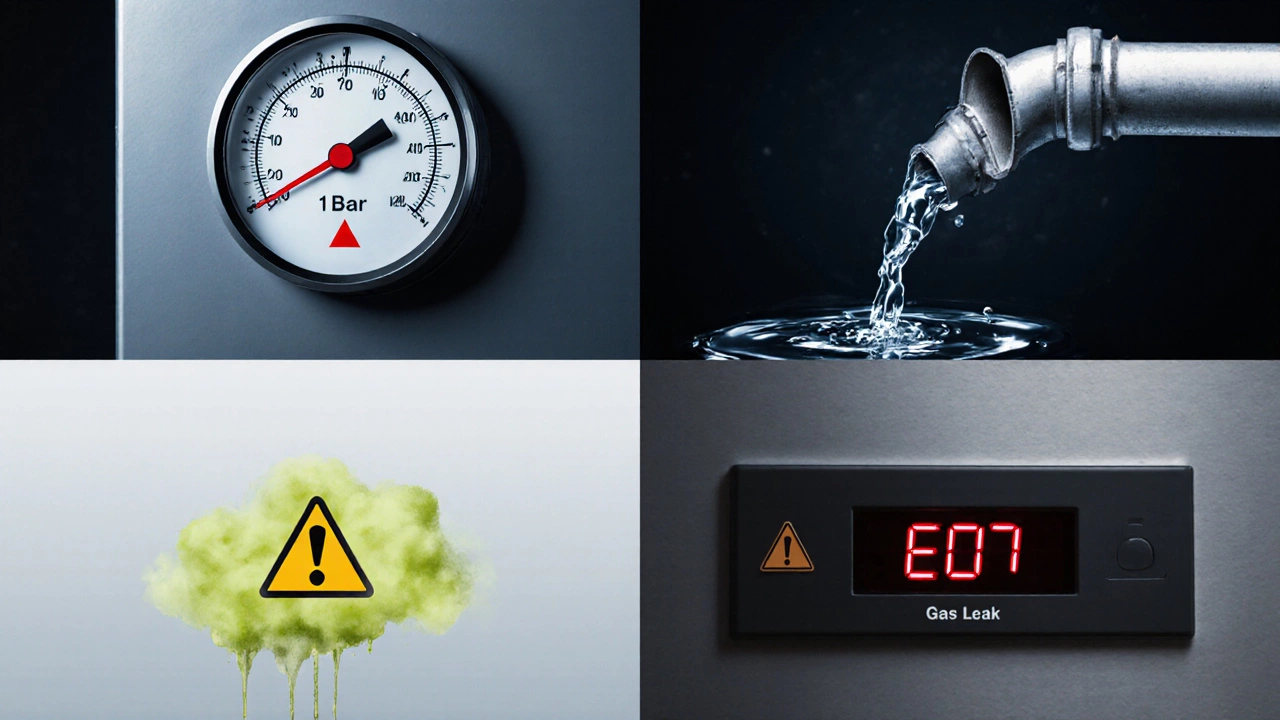
3. DIY checks you can safely perform
- Turn off the boiler and let it cool (at least 30 minutes).
- Inspect the area for any visible water. If you see a steady drip, note the location - it helps the technician.
- Open the pressure valve (usually a small bleed screw) and watch the Pressure gauge. If the gauge climbs rapidly after you close it, there’s a pressure build‑up issue.
- Bleed radiators that feel cool on the top. Use a radiator key to release trapped air; you’ll hear a hissing sound.
- Check the thermostat setting. Make sure it’s not set lower than the ambient temperature, and verify batteries if it’s wireless.
If any step uncovers a serious leak, strange smell, or you’re unsure, stop and call a qualified boiler technician.
4. When to call a professional
Not every glitch warrants a DIY fix. Here’s a quick decision tree:
- No heat, no flame, gas smell - Call a licensed gas fitter immediately.
- Persistent low pressure after refilling - Expansion vessel or pressure relief valve needs expert attention.
- Repeated error codes - Likely a faulty circuit board or sensor; require a certified repair.
- Corrosion, rust, or water pooling around the unit - Could be a leaking heat exchanger; replace only by a professional.
- Boiler is older than 12‑15 years - Even if it works, schedule a comprehensive service; efficiency drops and safety risks rise.
In all other cases, a yearly service from a recognized boiler service company keeps everything humming.
5. How a yearly service prevents panic
A standard service includes:
- Inspection of the Heat exchanger for cracks or corrosion.
- Cleaning of the burner and flue to ensure efficient combustion.
- Testing of the Gas valve and safety cut‑off mechanisms.
- Verification of the Pressure gauge reading and expansion vessel pressure.
- Calibration of the Thermostat and temperature sensors.
By catching wear early, you avoid emergency call‑outs that can cost 2‑3 times a routine service. In Adelaide’s winter, a well‑tuned boiler can save up to 15% on gas bills.
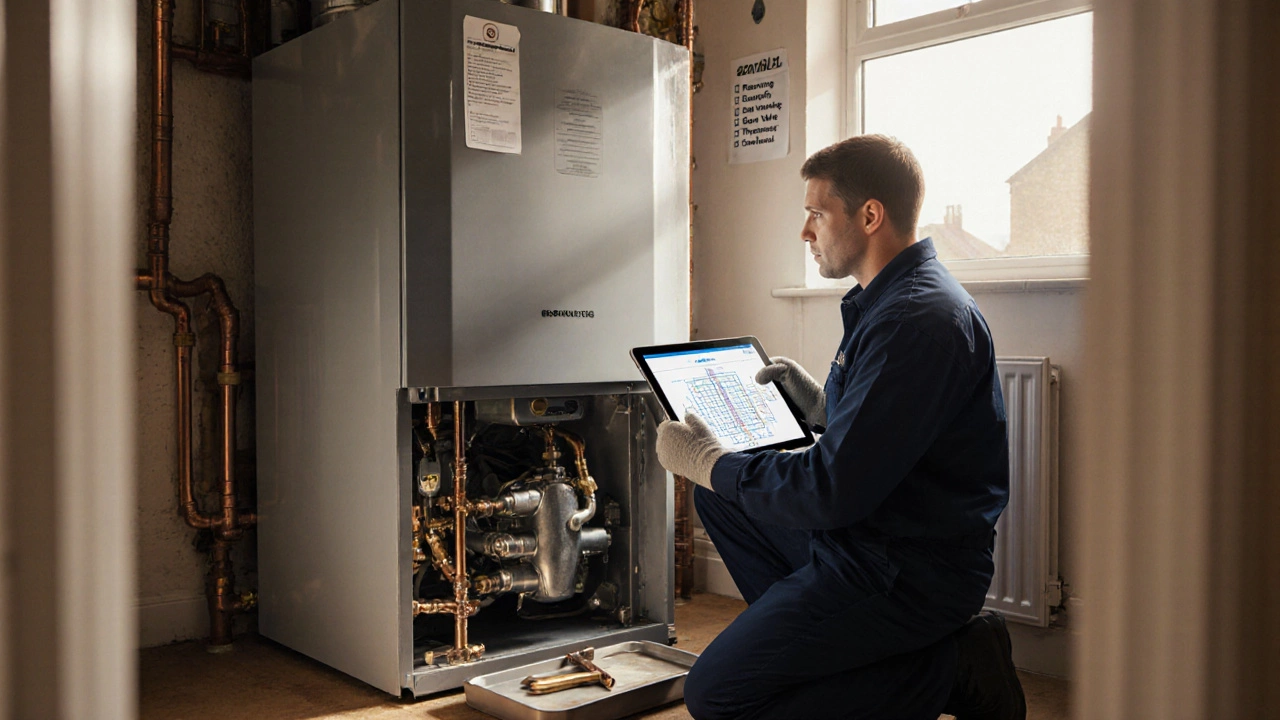
6. Managing repair costs
Repair expenses vary by issue:
- Thermostat replacement - $120‑$250.
- Expansion vessel - $180‑$350.
- Heat exchanger overhaul - $800‑$1,500 (often cheaper to replace the whole boiler if it’s old).
- Gas valve or pilot assembly - $200‑$400.
Ask for a written quote before any work begins, and verify that the technician is licensed under the Australian Gas Association. Some local councils offer rebates for upgrading to a high‑efficiency condensing boiler, so keep an eye on government grant pages.
7. Quick reference checklist
Print this out and keep it near your thermostat:
- Check pressure gauge weekly - aim for 1‑1.5bar when cold.
- Listen for any odd noises daily.
- Inspect for water around the unit each month.
- Bleed radiators if top feels cool.
- Schedule a professional service before the first cold night (May‑June in SA).
Frequently Asked Questions
What does a flashing error code mean?
Most modern boilers display a short alphanumeric code that points to the failing component. The manual lists the code and a brief action guide. If the code repeats after a reset, it’s time to call a technician.
Is it safe to top up the pressure myself?
Yes, as long as you follow the manufacturer’s steps: locate the filling loop, open the valves slowly, and watch the pressure gauge climb to the recommended level. Stop once you reach 1‑1.5bar. If the pressure drops again quickly, there’s likely a leak.
Why does my boiler keep turning off after a few minutes?
Short‑cycling can be caused by a faulty thermostat, an oversized boiler, or low water pressure. Check the pressure first; if it’s fine, the thermostat might need recalibration or replacement.
Can I ignore a faint gas smell?
Never. Even a faint sulphur smell can indicate a leak that could become explosive. Open windows, turn off the boiler, and call a licensed gas plumber immediately.
How often should I bleed my radiators?
Ideally at the start of the heating season and whenever you notice cold spots. It takes less than five minutes and costs nothing.
Is a 10‑year‑old boiler still reliable?
If it’s been serviced annually and shows no major faults, it can still perform well. However, efficiency drops after about 12years, and replacement may become cheaper than repeated repairs.

